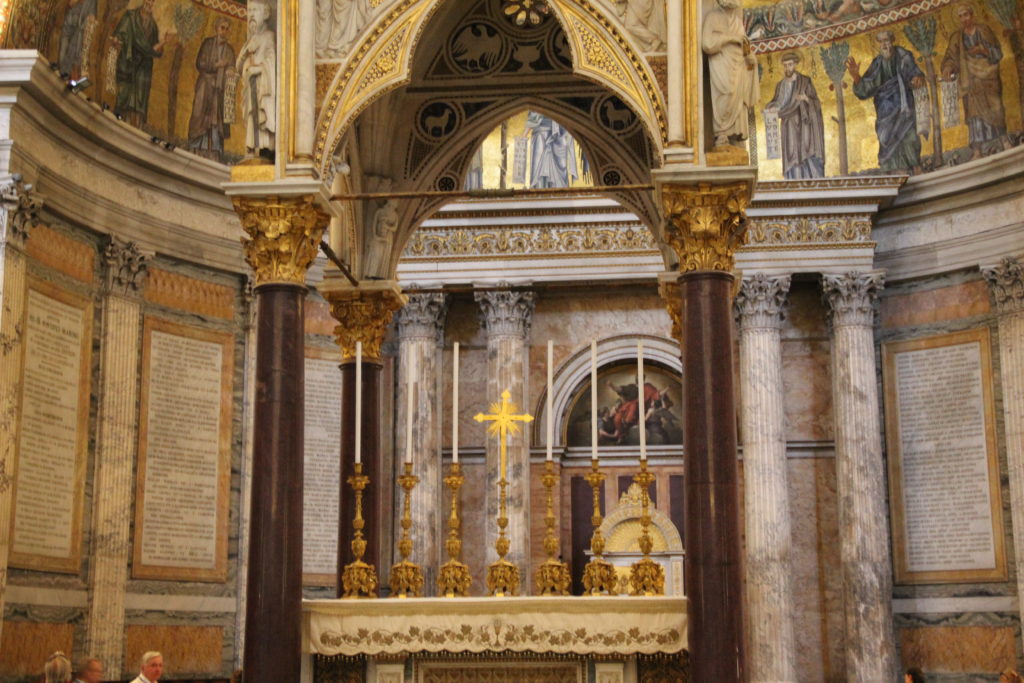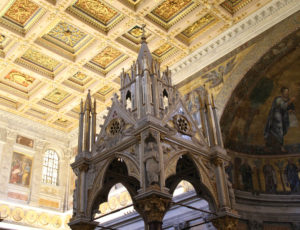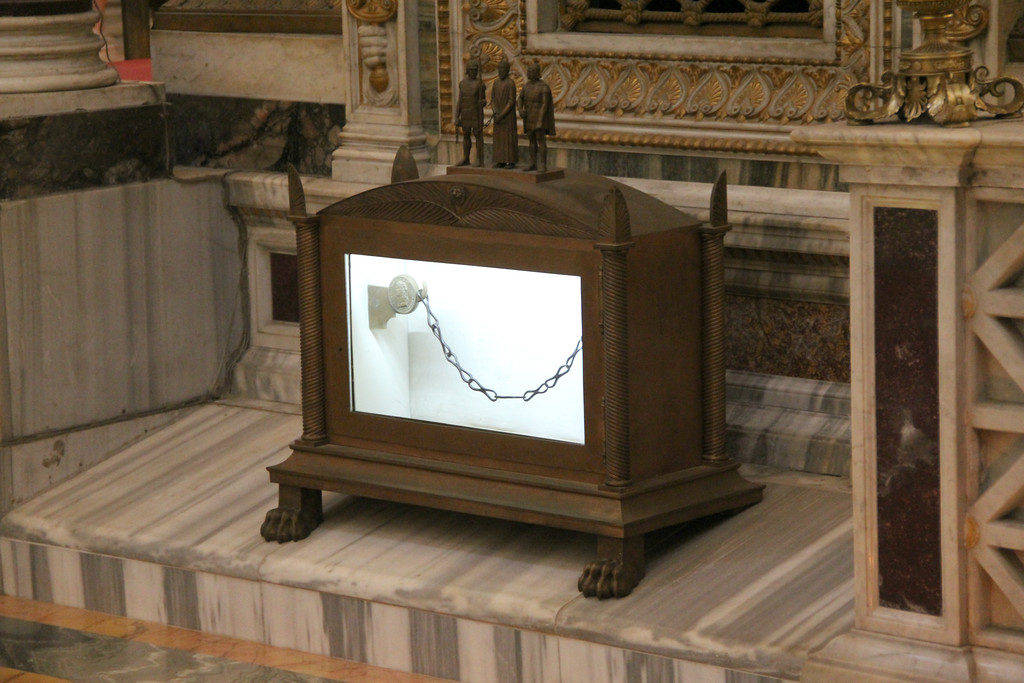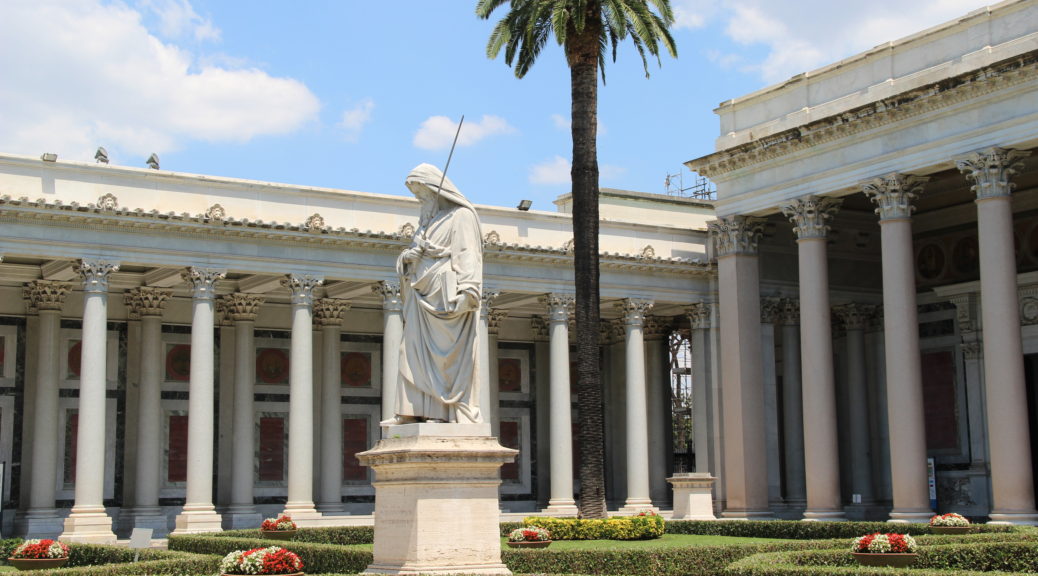
The Pantheon and St. Paul’s Basilica
The Pantheon was originally built as a temple to pagan gods but became a Christian church in 609AD. It is considered the best preserved ancient building of its time. The best estimate of when it was originally built is 27BC, but this is not a certain date. It suffered two fires – the present structure was built in 120AD. Looking at the building from the front, you might assume it is a rectangular building, but behind the portico, the interior is round (see second picture below).
The portico is supported by 16 pillars, 39 feet tall and each weighing 60 tons. The pillars were transported from Egypt; this is the story of their trip:
These (the columns) were dragged more than 100 km (62 miles) from the quarry to the river on wooden sledges. They were floated by barge down the Nile River when the water level was high during the spring floods, and then transferred to vessels to cross the Mediterranean Sea to the Roman port of Ostia. There, they were transferred back onto barges and pulled up the Tiber River to Rome. After being unloaded near the Mausoleum of Augustus, the site of the Pantheon was still about 700 metres (meters) away. Thus, it was necessary to ether drag them or to move them on rollers to the construction site.
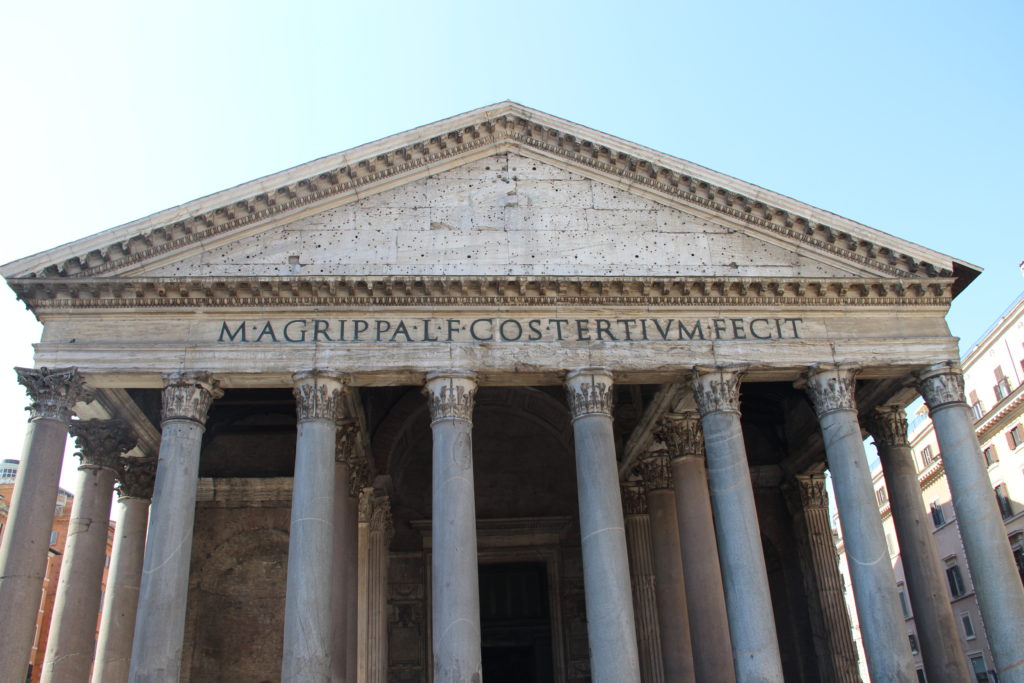
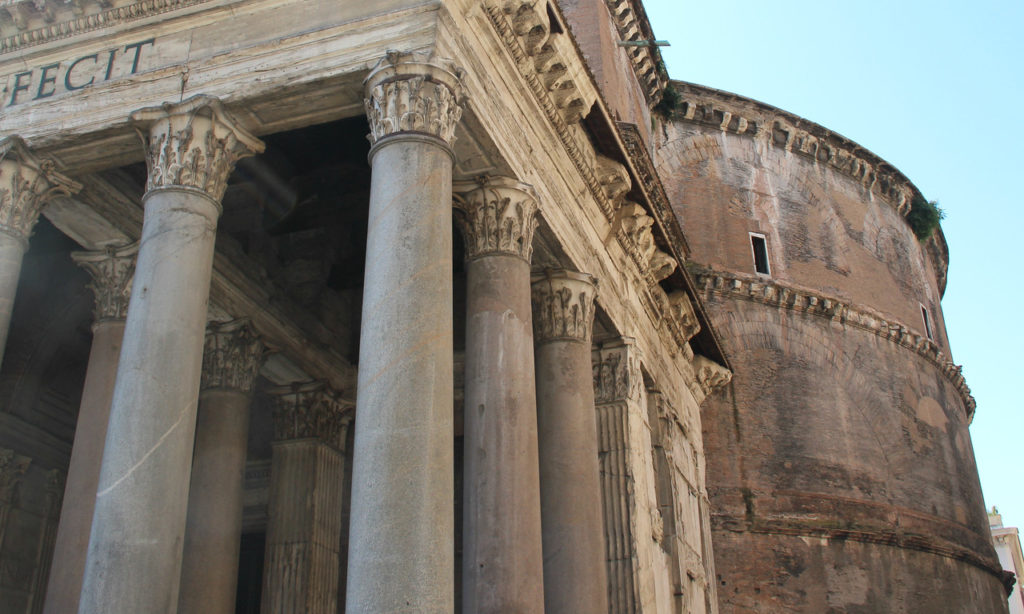
I found the most interesting part of the Pantheon to be the dome. It is massive and made of concrete – it is an engineering marvel, particularly considering when the Pantheon was constructed. It is the largest unreinforced dome in the world. The thickness of the dome decreases from approximately 21 feet at its base to just under four feet at the oculus. Basalt was mixed with concrete near the dome’s base while a pumice mixture was used near the top. All of this helped to lessen the weight of the dome. It is only supported by the walls of the Pantheon which are approximately 21 feet thick. The dome is actually larger than St. Peter’s Basilica, but due to the way it was constructed, there is a “flattening” effect.
Once inside the Pantheon, one is drawn to look at the dome. The opening, called an oculus, is about 25 feet in diameter. It is the only source of light in the Pantheon. It occasionally rains and when rain enters, the floor is slanted for efficient drainage. The floor is marble, decorated in geometric shapes. It too dates back to ancient times.
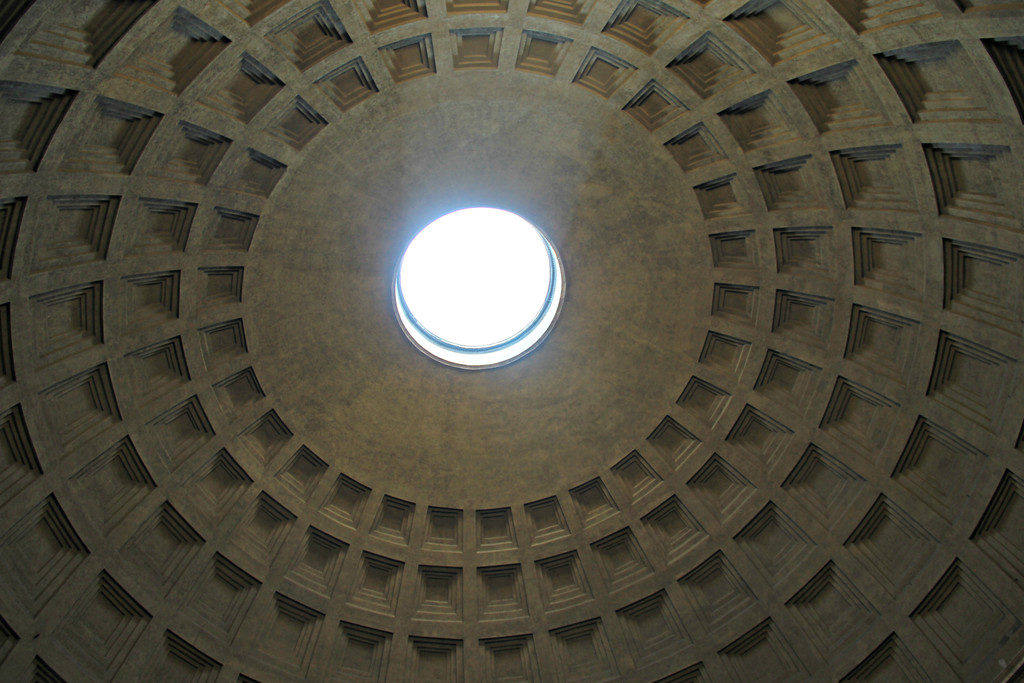
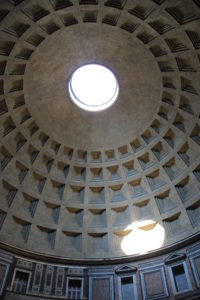
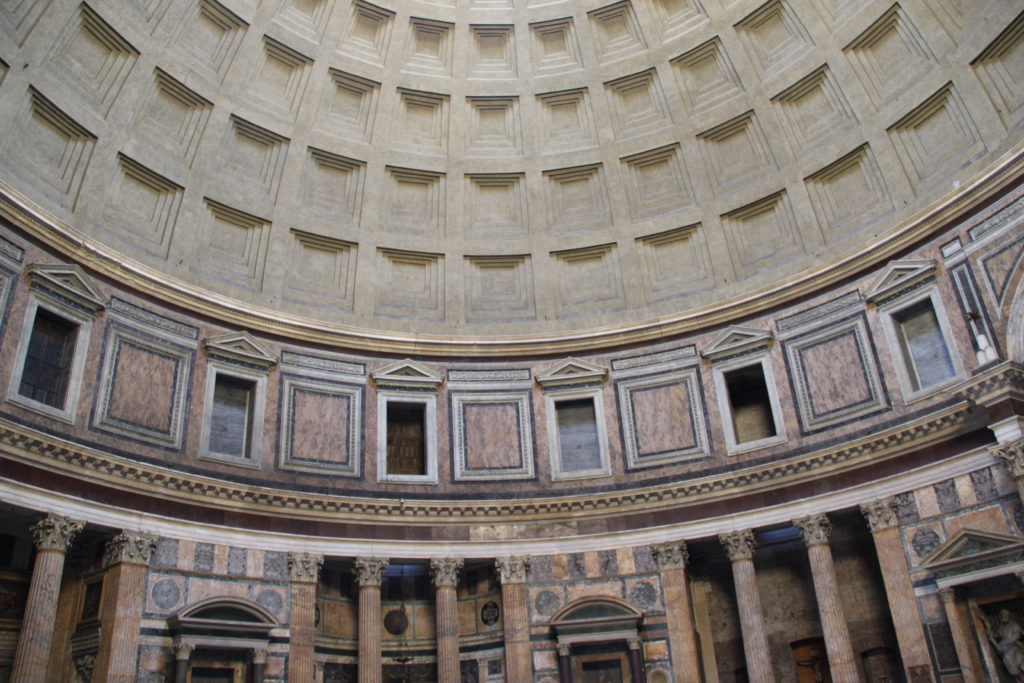
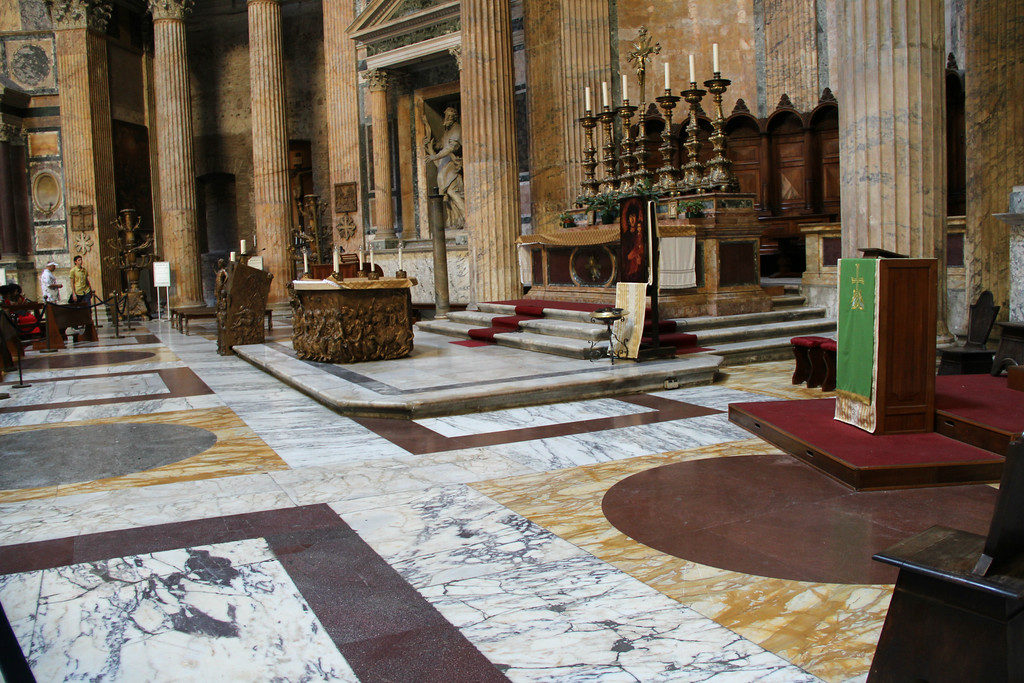
These are pictures of the interior of the Pantheon. There are several recesses within the Pantheon, the most prominent being the high altar, which you will see in the next two pictures. The yellow half dome is decorated with mosaics. Mass is celebrated regularly at the Pantheon. It was dedicated as “Basilica of Holy Mary of the Martyrs.” Some of the recesses contain small chapels. Three of the recesses are burial sites. The third picture below is where Raphael – and nearby his fiancee – are buried. Two kings are also buried here, Vittorio Emanuele II and Umberto I. The final picture in this section is another of the interior showcasing some of the Pantheon’s pillars and statues.
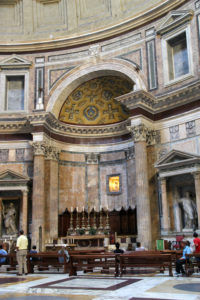
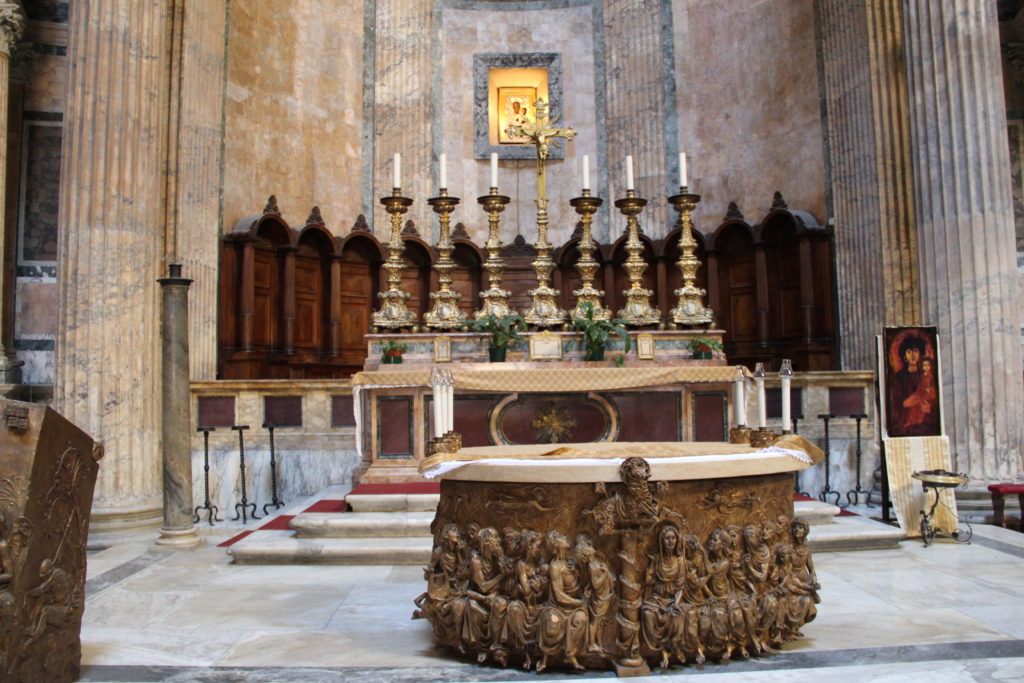
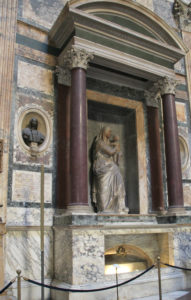
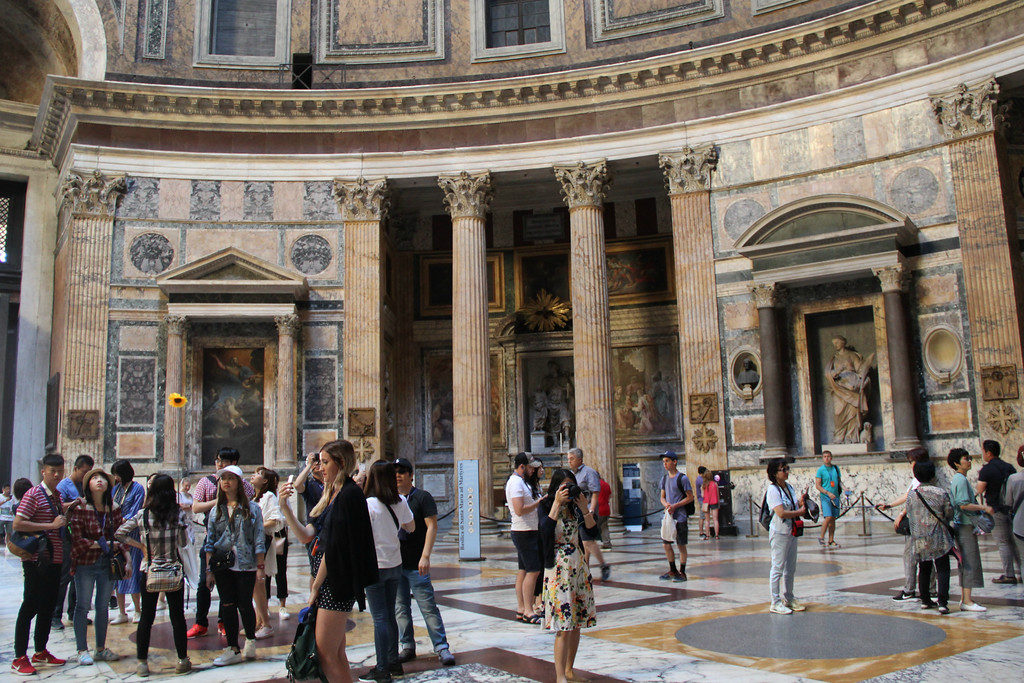
We also visited St. Paul’s Basilica which is commonly known as Basilica of St. Paul Outside the Walls, so named because it is outside of the Aurelian Walls. It is one of four papal churches in Rome and is second in size only to St. Peter’s Basilica. It was built over the burial site of St. Paul who was beheaded by order of Nero in the mid 60’sAD. Emperor Constantine had a basilica built at the site which was consecrated in 324AD. In the years to follow, it was expanded and enhanced. A fire destroyed much of the original basilica in 1823, but it was rebuilt incorporating the parts that had survived the fire. Donations came from around the world to support the building project. The portico was added in 1928 and consists of 150 columns with a statue of St. Paul standing in the center. These are pictures of the exterior facade and portico.
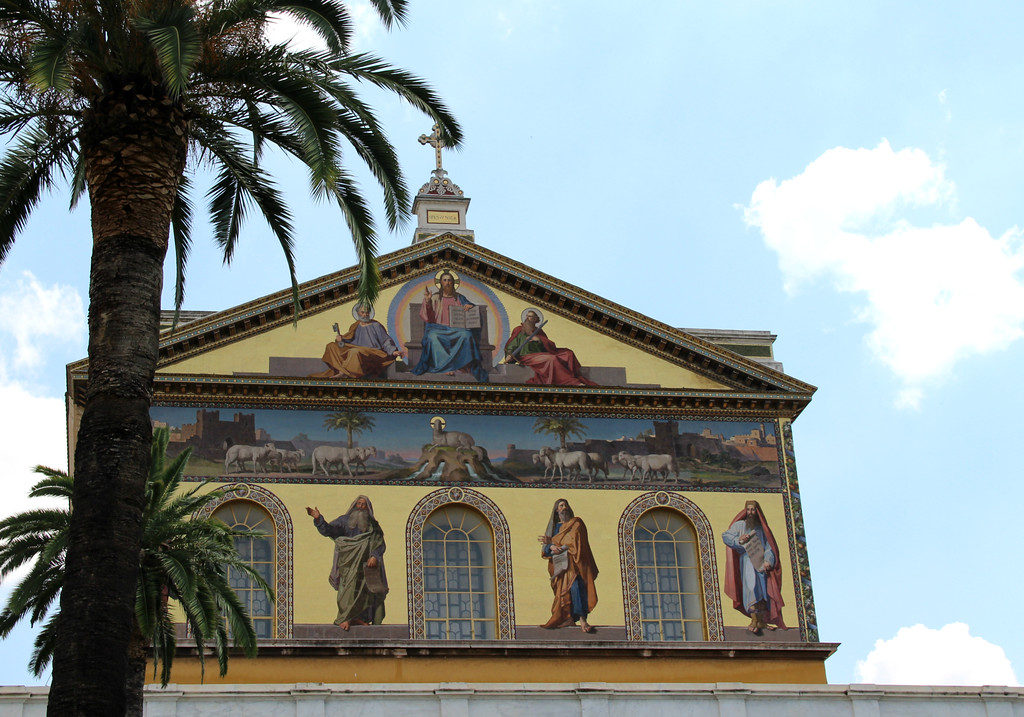
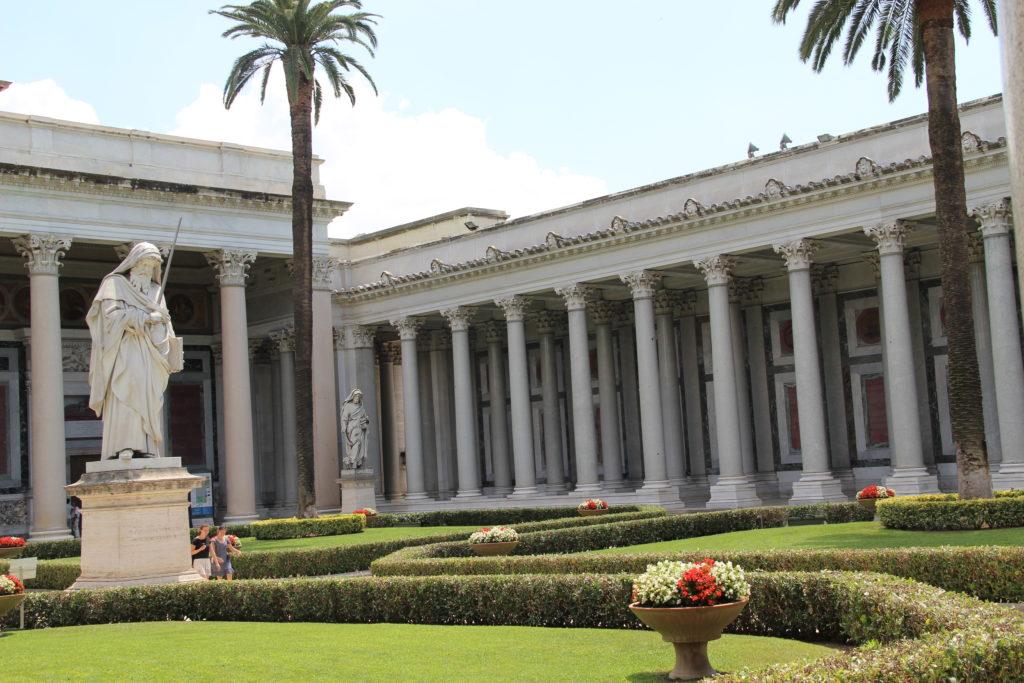
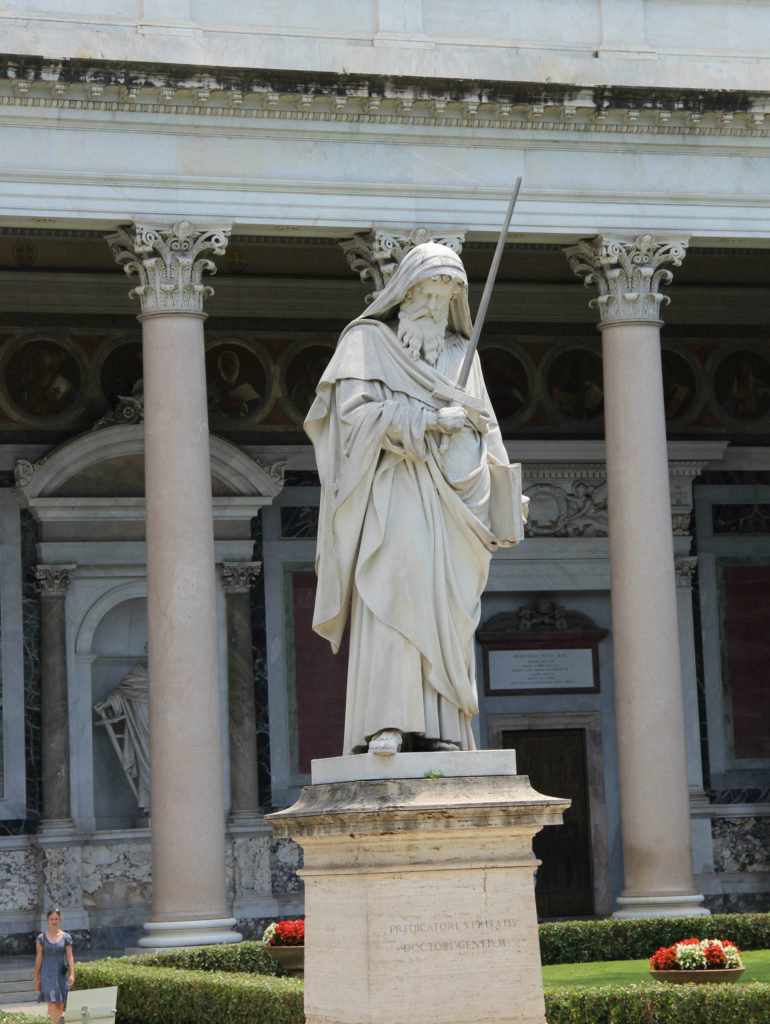
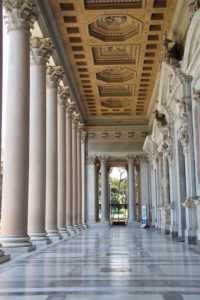
Next are pictures of the interior of the basilica. Like other churches we have seen, you can see the beauty in the ceiling, walls, floor, and windows. The second picture is of the byzantine door which was made in Constantinople. It served as the main door in the original basilica and survived the 1823 fire. It is considered one of the most significant bronze doors in Italy. I have also included a close-up photograph of one of the 54 panels. These tell stories of the life of Christ and the Apostles. The windows in the basilica look like they are stained glass, but they are actually alabaster. The paintings on the walls of the nave depict the life of St. Paul as told in the book of Acts.
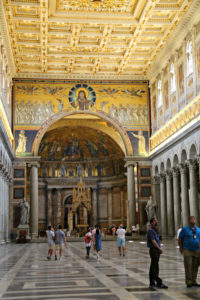
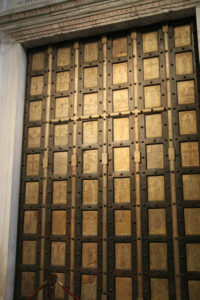
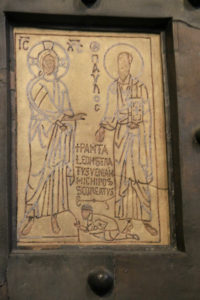
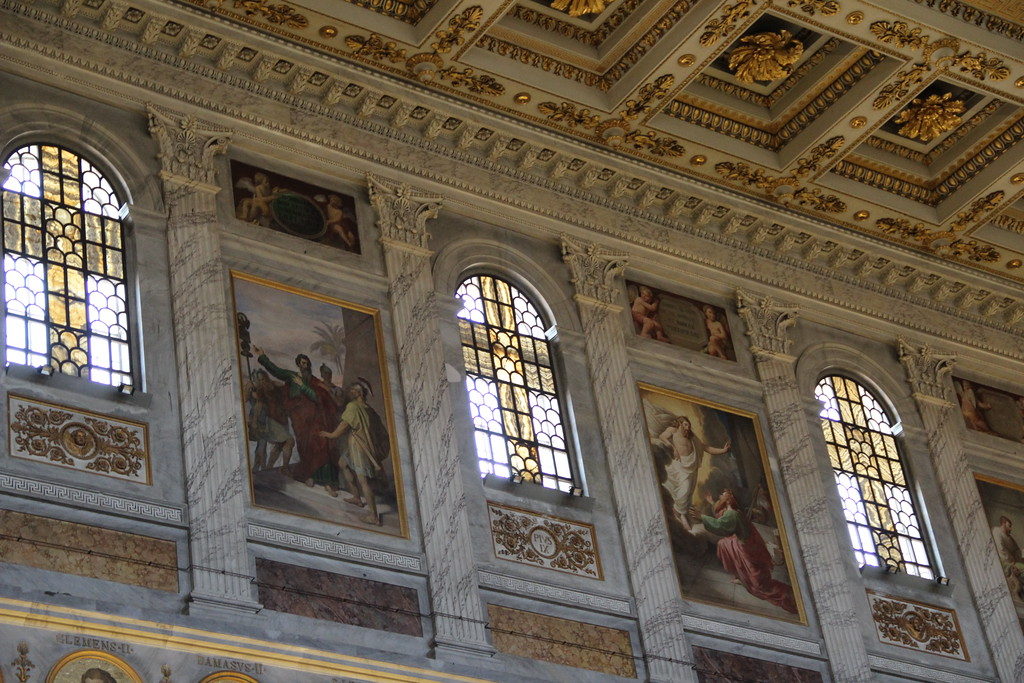
These are more pictures taken inside St. Paul’s Outside the Walls Basilica. The first two pictures are of the Easter Candle Stand, also referred to as the Paschal Candle Stand. It was sculpted by Nicola d’Angelo and Pietro Vassalletto around 1170. Many of the scenes depict Christ’s crucifixion and resurrection. The close-up picture I took is Pilate washing his hands of the decision to crucify Jesus. At the very top of the stand (not visible in my pictures) is a candle which is lit the eve of Easter and then several times following Easter.
There had been frescoes of all the popes in the original basilica but most were destroyed in the fire. Pope Pius IX directed that they be replaced but this time the art form was to be mosaics – the project began in 1847. Since then, each pope has been added to this collection. They are in a single row above the columns in the main hall. Only Pope Francis’ likeness is illuminated. There is only a finite amount of space available for these portraits and some predict that when the last space is filled, the end of the world will come.
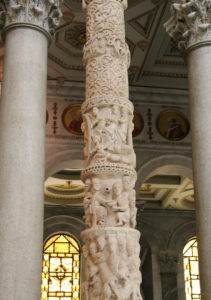
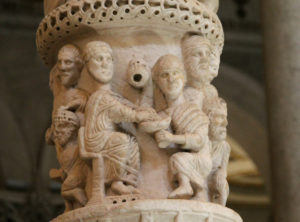
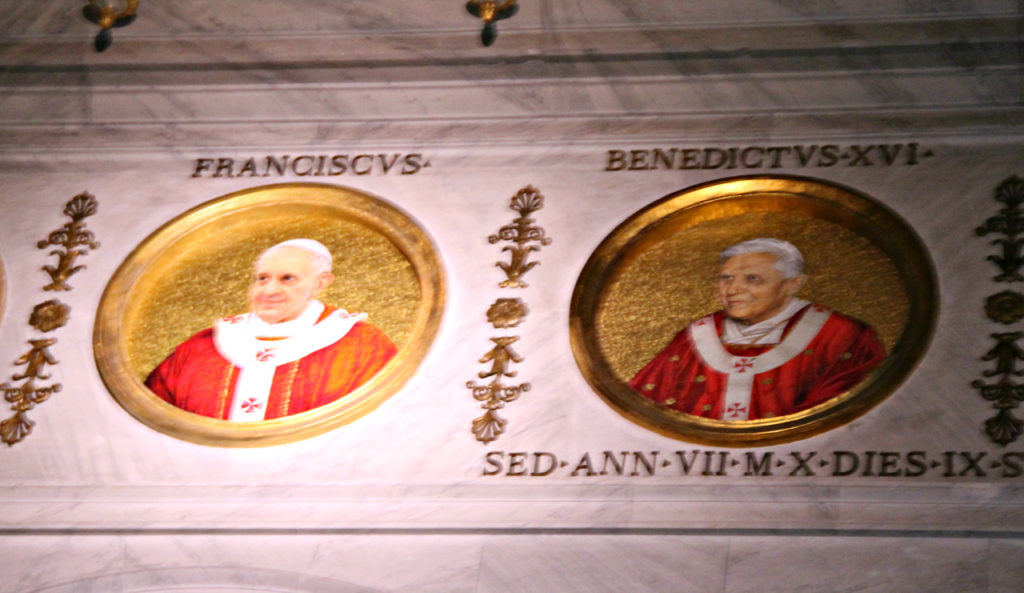
In the front of the church, decorating the apse, is a beautiful mosaic with Christ in the center and the disciples, Peter, Paul, Andrew, and Luke, at His sides. The mosaic dates back to 1220. Although the apse was damaged, it did survive the fire of 1823 and the mosaics were repaired. The altar, called the Altar of the Assumption, stands over the remains of St. Paul (his tomb also survived the fire). Only the pope, or another clergy member with special permission, can celebrate mass from this altar. The mosaic above the altar is a copy of a painting and is entitled. “The Assumption of the Madonna.” Tradition says that the apostles went to Mary’s grave, but she was not there because her body and soul were “assumed” to heaven. In the bottom half of the picture, you will see the apostles at her tomb and in the upper half, Mary is in Heaven.
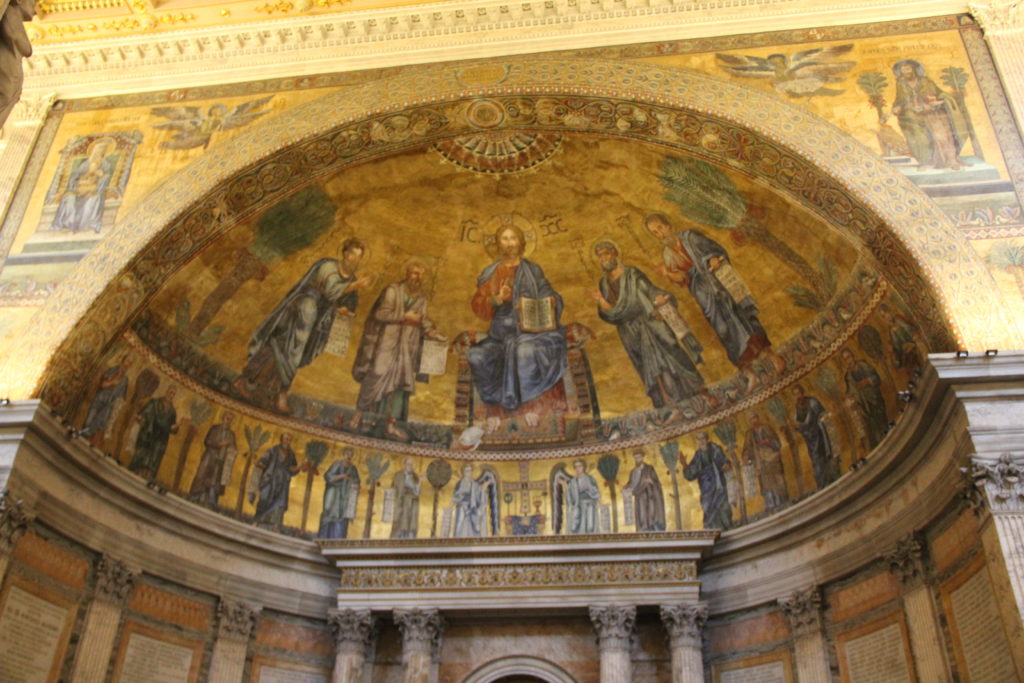
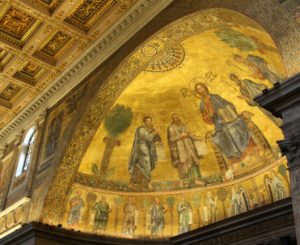
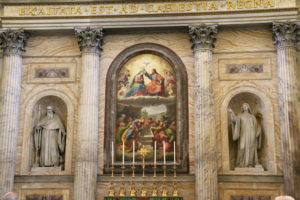
After Paul was beheaded, he was buried in a nearby cemetery. Many early Christians came to his grave to pray. His sarcophagus was marked by a marble tombstone that in English reads, Apostle Paul Martyr. Today it lies about 4 1/2 feet beneath the altar of the basilica. A ciborium, or baldacchino, is above the altar and St. Paul’s tomb. Although the columns of the ciborium were replaced after the fire of 1823, the canopy was not destroyed in the fire. It was created in 1285 by Arnolfo di Cambio. Also displayed is a chain believed to have secured St. Paul to a Roman guard while he was imprisoned. This basilica is not as well-known among tourists as is St. Peter’s Basilica, but it is a beautiful church and certainly worth visiting.
